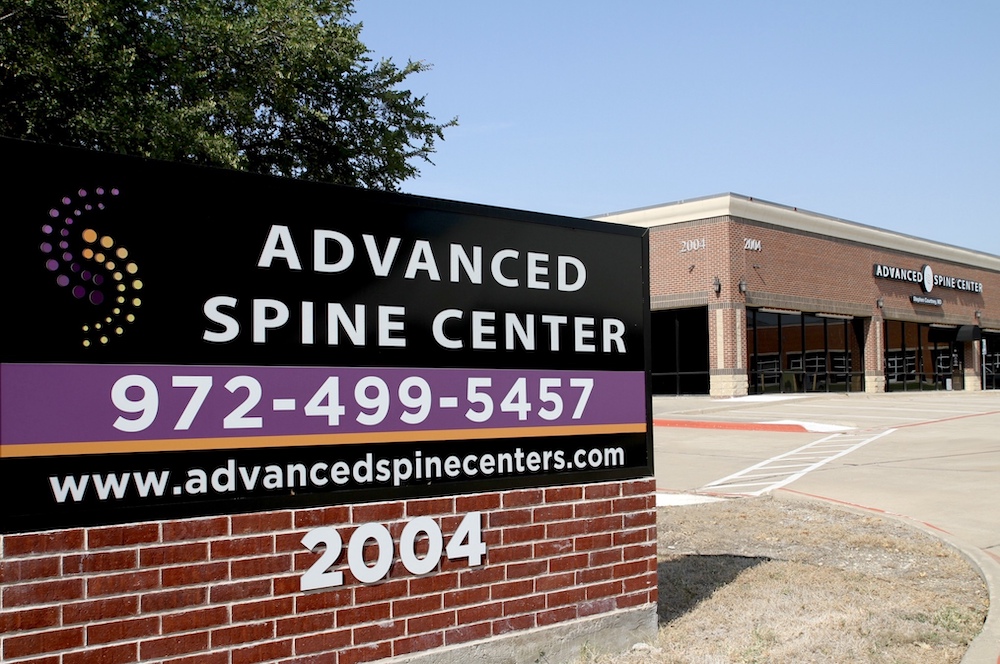Specialties
Cervical Fusion Surgeon in Plano, TX
Pain, numbness, or tingling in the neck that extends into your arms or hands isn’t just annoying — these symptoms can prevent you from exercising, enjoying your favorite hobbies, and working. Find relief with a visit to the Advanced Spine Center in Plano, Texas. Cervical fusion surgery in Plano is a highly effective treatment for numbness, tingling, and pain in the neck.
Board-certified orthopedic spine surgeon Stephen Courtney, MD, has more than 20 years of experience performing minimally invasive cervical fusion surgeries to relieve neck, arm, and hand pain and discomfort. Learn more about your treatment options by calling 972-499-5457 or requesting an appointment online today.
Cervical Spine Anatomy
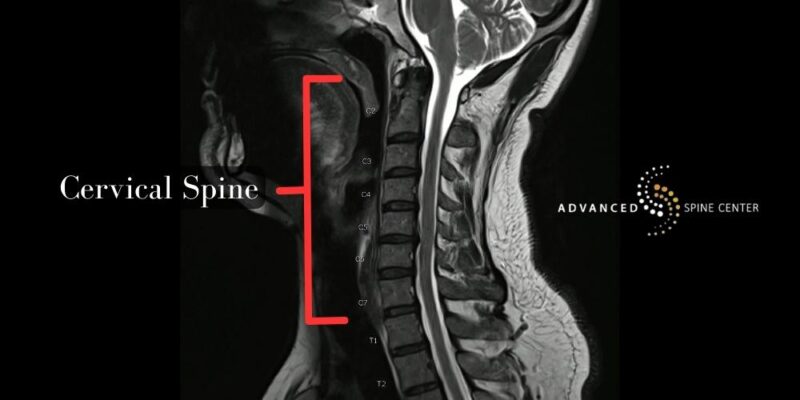
The cervical spine makes up the first seven vertebrae in the spinal column. These stacked vertebrae are labeled C1 through C7, with C1 being at the top. All seven cervical vertebrae are connected via facet joints. The cervical spine serves many functions, including supporting the head, protecting the spinal cord, and providing range of motion for the head.
Other important structures in the cervical spine include the spinal cord, spinal nerves, muscles, ligaments, and spinal discs. These structures work together to support the cervical spine, allowing it to uphold and provide movement to the head.
Unfortunately, many people suffer from pain in their cervical spine (neck pain), along with numbness, tingling, and stiffness. These symptoms can arise from many conditions that affect the neck, including degenerative disc disease, disc herniation, bone spurs, spinal cord compression, spondylosis, and others.
If you suffer from neck pain that conservative treatments aren’t helping, it may be time to consider a surgical approach. Although spine surgery may sound intimidating, it is a routine procedure for Dr. Courtney, as he is a board-certified and fellowship-trained orthopedic spine surgeon.
What Is Cervical Fusion Surgery?
Cervical spinal fusion surgery is a procedure that permanently joins two or more vertebrae in the neck to provide pain relief and stability. It is a surgical procedure that is generally performed to treat disc herniations and relieve pressure on the nerve root in the cervical spine. Generally, cervical spinal fusion is performed at the front of the neck, but it can also be performed at the back. Below, we outline the differences between anterior and posterior cervical fusion.
Anterior Cervical Discectomy and Fusion (ACDF) Surgery
Anterior cervical discectomy and fusion (ACDF) is a minimally invasive surgery that removes herniated discs before permanently fusing two or more cervical vertebrae together. ACDF surgeries are performed at the front of the neck, around the throat area, rather than the back. This is because accessing the herniated disc is easier from the front, as it will not disturb the spinal nerves, spinal cord, or stronger neck muscles.
To access the discs and vertebrae, the surgeon makes an incision at the throat. From there, they move aside the trachea, esophagus, and weaker neck muscles. Then, they can proceed with the removal of damaged discs and the fusion of vertebrae.
Posterior Cervical Fusion
Posterior cervical fusion is a minimally invasive procedure aimed at relieving neck pain by removing bone spurs or herniated discs and fusing two or more vertebrae together. Although most cervical spinal fusion surgeries are performed at the front of the neck, some surgeons opt to approach from the back of the neck.
To access the affected vertebrae, the surgeon will make an incision at the back of the neck over the targeted vertebrae. They will split the strong neck muscles to more easily access the spinal canal, spinal cord, and disc space. Then, they proceed with removing the damaged disc and fusing the vertebrae together.
When Is Cervical Fusion Recommended?
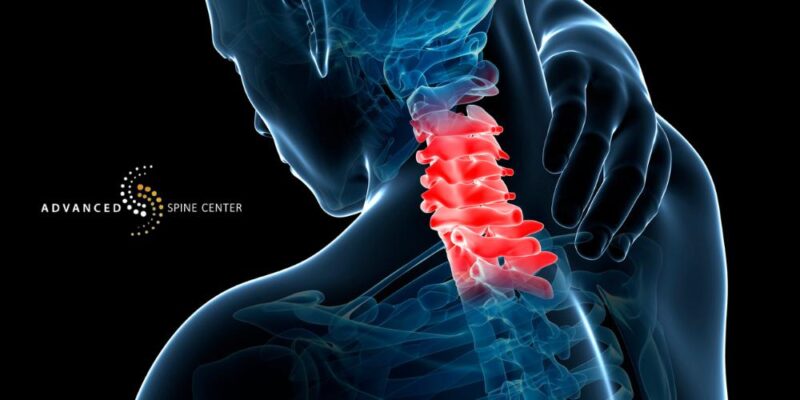
Many surgeons recommend anterior cervical discectomy and fusion for patients with a herniated disc, nerve compression, spinal stenosis, and other conditions. Dr. Courtney may recommend cervical fusion if you’ve tried conservative treatments, including anti-inflammatory medications, physical therapy, and lifestyle changes, without success. The type of surgery he suggests is based on your diagnosis, symptoms, and overall health.
What Conditions Does Cervical Fusion Treat?
Spine surgeons recommend cervical spine fusion when conservative treatments for painful conditions have not shown results. Dr. Courtney could recommend cervical fusion if you have:
- Herniated cervical discs
- Cervical disc disease
- Degenerative joint disease
- Spinal stenosis
- Cervical spondylolisthesis
- Arthritis
- Cervical radiculopathy
To determine if cervical fusion is right for you, Dr. Courtney discusses your symptoms with you during a consultation and an extensive orthopedic exam. Dr. Courtney could refer you for X-rays or an MRI as well.
What Happens Before Cervical Fusion Surgery?
Before your cervical fusion procedure, Dr. Courtney explains how to prepare, what happens during surgery, and what to expect in recovery. You should avoid taking certain medications like blood thinners before your surgery to prevent complications. To further prepare for spine surgery, we recommend taking the following steps.
- Arrange for someone to drive you home after surgery. The use of anesthesia and pain medication can impair your ability to drive safely, so most patients have a family member or close friend take them home.
- Ask questions. Before undergoing ACDF surgery, you should fully understand what the surgery entails. You should also know the risks, benefits, and alternative treatment options. If you have any questions about the surgery, don’t hesitate to ask your provider.
- Stop taking certain medications. Your doctor will ask that you stop taking blood thinners, aspirin, and other medications that can prevent blood clots.
- Inform your doctor. Tell your surgeon about all the medications and supplements you take, including natural products. If any of them could raise the risk of complications during or after surgery, they will ask you to stop taking them.
Before the day of the surgery, your doctor will give you specific instructions on how to prepare. Stop eating and drinking exactly when your doctor tells you. If they instruct you to take medications on the day of the surgery, they should be taken only with water.
Before you arrive for the surgery, ensure that you have thoroughly bathed or showered. Refrain from applying certain products, such as lotion, deodorant, perfume, and nail polish. You should also remove your contact lenses if you wear them and remove all piercings and jewelry.
What Happens During Cervical Fusion Surgery?
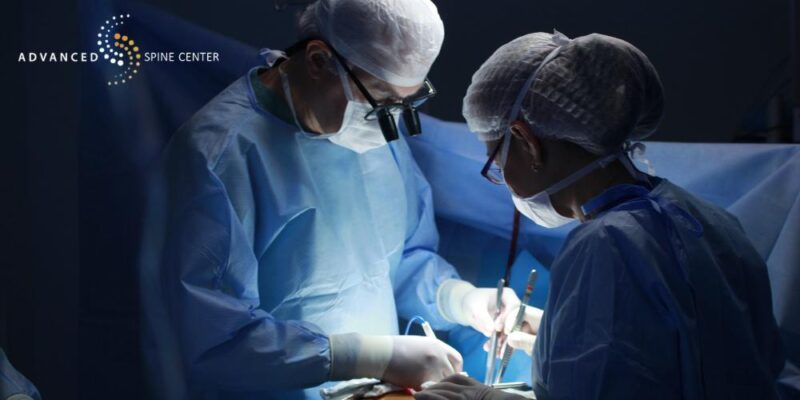
Cervical fusion includes three steps. First, Dr. Courtney removes the damaged disc or discs. He uses small, minimally invasive surgical tools to avoid disturbing surrounding structures in the spinal canal, which decreases trauma to the tissues and aids in recovery.
Next, he inserts a surgical cage. The surgical cage is filled with medical-grade bone putty from donor bone tissue. Some surgeons use a bone graft from a donor. The cage helps to maintain the space between your vertebrae where the disc is removed.
Finally, Dr. Courtney applies a plate to the front of your vertebrae above and below the surgical cage. The plate is attached with screws for stability, protecting the area as it heals and providing long-term structural integrity.
How Long Does It Take to Recover from Cervical Fusion?
Your cervical fusion surgery will last 1-3 hours, depending upon the number of discs removed. Dr. Courtney and his team care for you in a recovery room. You’ll stay in the hospital for about a day before returning home to complete your recovery, which takes 2-6 weeks.
Dr. Courtney reviews your medications and necessary precautions before and after your surgery. You’ll wear a cervical collar (neck brace) for two weeks until your follow-up appointment. At your follow-up visit, Dr. Courtney takes post-op X-rays and assesses your healing.
Neck Surgery C5-C6-C7 Recovery Time
Commonly, ACDF surgery involves fusing the C5, C6, and C7 vertebrae. You will recover in approximately 4 to 6 weeks. However, a full recovery usually takes at least a few months. Follow your doctor’s post-operative instructions as closely as possible. This can help reduce the risk of complications and promote faster healing.
How to Sleep After Cervical Neck Surgery
In order to recover from ACDF surgery, it is imperative that you get enough sleep. While pain medicines can help relieve discomfort, there are other steps you should take. We recommend that patients sleep either in a recliner or bed with their head elevated to at least 30 degrees. This should help reduce swelling around the surgical site, which can alleviate some postoperative pain. It can also help with swallowing difficulties.
What to Avoid After Cervical Fusion
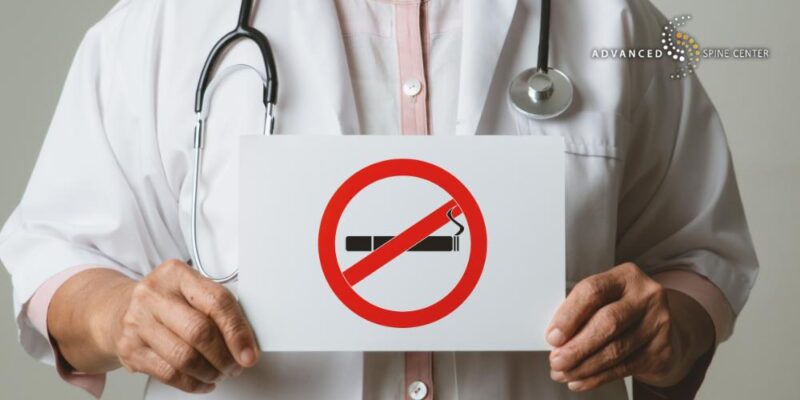
After anterior cervical discectomy and fusion, there are certain activities to avoid that could cause complications and prevent healing. Some activities to avoid after ACDF surgery include the following.
- Smoking: When people smoke tobacco products, it inhibits blood flow. You should avoid smoking or enduring secondhand smoke while you recover from your surgery.
- Driving: As much as possible, avoid driving for the first few weeks after surgery. It is possible to experience sudden, jarring movements while driving a vehicle. These movements can cause significant neck pain or damage to the surgery site.
- Neglecting physical therapy: Many patients undergo physical therapy after their surgery. This helps them recover by restoring their range of motion, alleviating stiffness, strengthening the neck muscles, preventing future injuries, and managing pain.
- Heavy lifting: Completely avoid strenuous activities and heavy lifting until your doctor informs you that they are safe to resume. This can place stress on your neck and spine, which can impede your recovery.
- Neglecting incision care: Caring for the incision site is crucial for recovery. Follow your doctor’s instructions for incision care to promote healing and reduce the risk of infection.
What Are the Risks of Cervical Fusion?
As with any surgery, cervical fusion has certain risks to be aware of. Although complications from cervical fusion are rare, it is important for patients to understand the risks before undergoing surgery. The complications related to ACDF surgery include the following.
- Difficulty swallowing or a sore throat
- Fusion failure
- Fractures of the surgical hardware
- Migration of the bone graft
- Nerve damage and nerve pain
- Deep vein thrombosis
- Persistent postoperative pain
If you experience any of the following symptoms, contact your doctor right away.
- Chest pain
- Arm pain or leg pain
- Fever
- Pain that is unrelieved by pain medicine
- Significant nausea or vomiting
- Signs of infection at the incision site
- Difficulty breathing
- Itching or rashes at the incision site
- Tenderness and swelling of the leg
- Confusion, dizziness, or excessive fatigue
What Is the Outlook for Cervical Fusion Results?

The outlook for cervical fusion surgery is very positive. Most patients experience a significant improvement in their neck or arm pain. According to a study published by the National Library of Medicine, the “self-reported success” from patients ranged between 85% and 95%. Overall, ACDF surgery results in significantly improved symptoms for at least 10 years after surgery.
Contact a Cervical Spinal Fusion Specialist in Plano at Advanced Spine Center
If you suffer from debilitating neck pain, numbness or tingling in the arms, or another medical condition, contact an orthopedic surgeon who specializes in cervical fusion. Dr. Courtney is one of the top Plano spine surgeons, with decades of experience, a board certification, and fellowship training. He can evaluate your symptoms, diagnose the source of your pain, and develop a personalized treatment plan to tackle the issues. To determine if cervical fusion with Dr. Courtney is right for you, call Advanced Spine Center at 972-499-5457 or request an appointment online.
